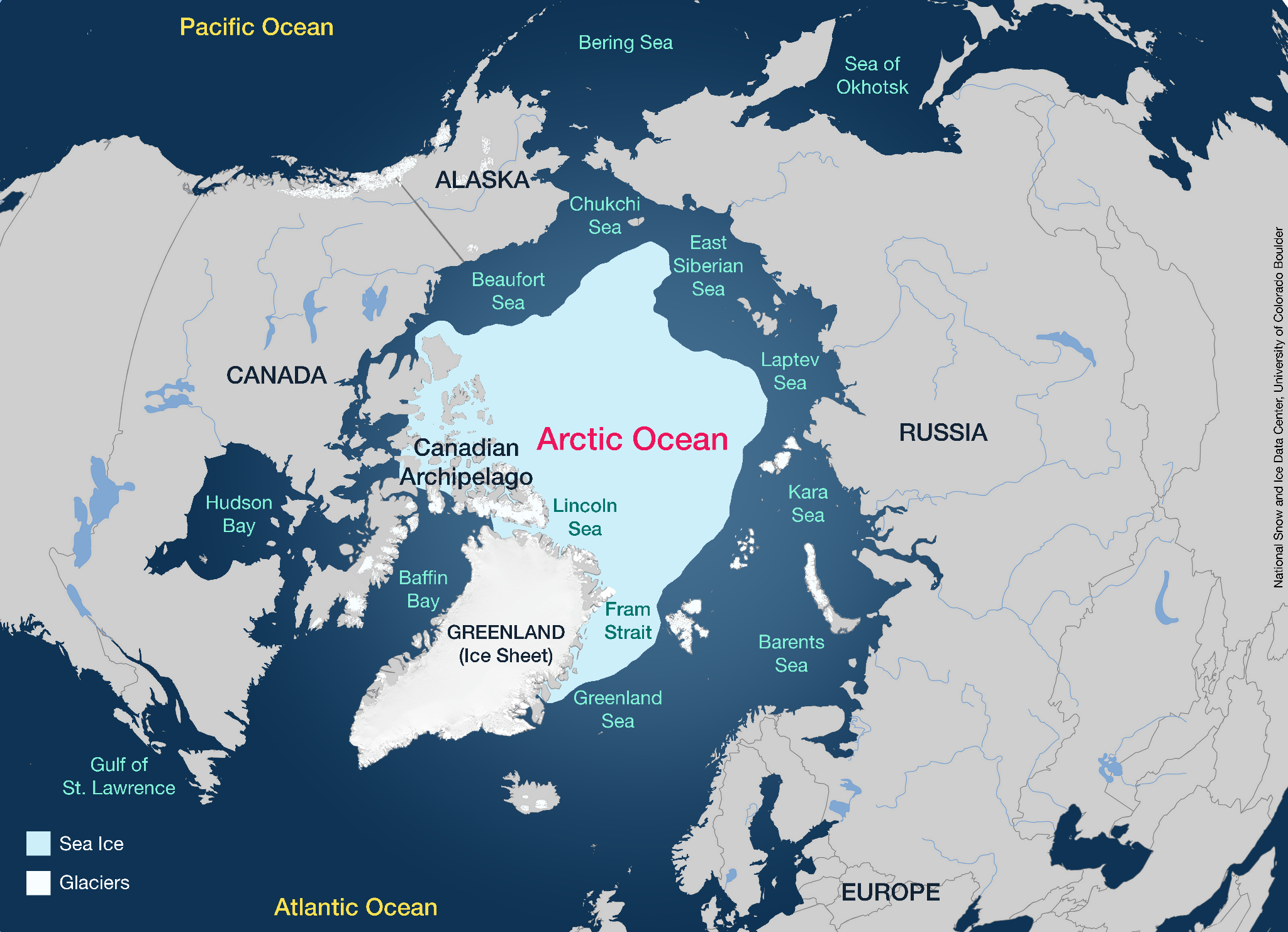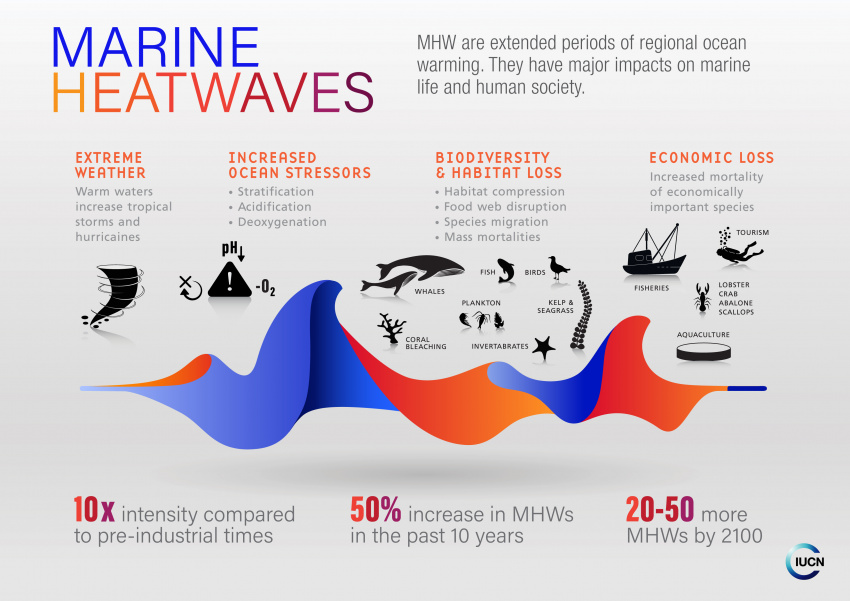Facts for UPSC Mains
Impact of Marine Heatwaves on Arctic Wildlife
- 24 Feb 2025
- 5 min read
Why in News?
A study warns that Arctic marine heatwaves (MHWs) are causing higher mortality, and lower reproductive rates risks in marine mammals.
What are the Key Findings of the Study?
- Increased Mortality & Reproductive Decline: Arctic and Subarctic marine mammals like whales, seals, and walruses face higher death rates and reduced calf production due to MHWs.
- Rising temperatures lead to toxic algal blooms (rapid increase in algae in a body of water), spread of diseases (e.g., avian influenza in polar bears), and prey migration, affecting food availability.
- Distribution & Human-Wildlife Conflict: Shifts in prey distribution compel species to migrate or risk starvation, increasing their chances of becoming entangled in fishing gear.
What are the Key Facts About Marine Heatwaves?
- About: MHWs are extreme oceanic weather events characterized by a sudden rise in sea surface temperature (3-4°C above average) for at least five days, potentially lasting weeks or longer.
- These events can cover small coastal areas or extend across entire ocean basins.
- Key Causes of MHWs: Climate change, driven by anthropogenic greenhouse gas emissions, has increased global ocean temperatures by 1.5°C over the past century.
- Disruptions in oceanic currents, such as El Niño, amplify heat retention, while Arctic ice loss exposes more ocean surface to solar radiation, accelerating warming.
- Unusual weather patterns, shifts in atmospheric circulation, and storm activities further trigger MHWs.
- Impact:
- Ocean Life: MHWs cause mass fish deaths and habitat destruction. Higher ocean temperatures lead to widespread coral bleaching (e.g., 2005 Caribbean bleaching event).
- Rising temperatures wipe out kelp forests, promote invasive species, and alter wildlife migration.
- Extreme Weather Events: MHWs intensify storms, leading to stronger hurricanes, cyclones, and severe flooding.
- Humans: They disrupt fisheries and global seafood supply, threatening the livelihoods of coastal communities that rely on coral reefs.
- Economic losses mount as MHWs force species migration, impacting tourism and fishing industries.
- Ocean Life: MHWs cause mass fish deaths and habitat destruction. Higher ocean temperatures lead to widespread coral bleaching (e.g., 2005 Caribbean bleaching event).
- Projected Trends: MHWs are expected to occur 50 times more often by 2100 compared to pre-industrial times.
- The Arctic and tropical regions are most vulnerable due to their existing temperature extremes.
- Mitigation and Adaption to MHWs: Stricter Paris Agreement policies are needed to limit ocean warming.
- Early warning systems can help fisheries and coastal communities prepare for MHWs.
- Expanding Marine Protected Areas (MPAs) and protecting key habitats like kelp forests, seagrass meadows, and coral reefs will safeguard marine life.
What are the Key Facts About the Arctic Region?Click here to Read: Arctic Region |
|
Drishti Mains Question: What are Marine Heatwaves, and how do they impact marine biodiversity and climate stability? |
UPSC Civil Services Examination, Previous Year Question (PYQ)
Prelims
Q. With reference to Ocean Mean Temperature (OMT), which of the following statements is/are correct? (2020)
- OMT is measured up to a depth of 26ºC isotherm which is 129 meters in the south-western Indian Ocean during January-March.
- OMT collected during January-March can be used in assessing whether the amount of rainfall in monsoon will be less or more than a certain long term mean.
Select the correct answer using the code given below:
(a) 1 only
(b) 2 only
(c) Both 1 and 2
(d) Neither 1 nor 2
Ans: (b)






